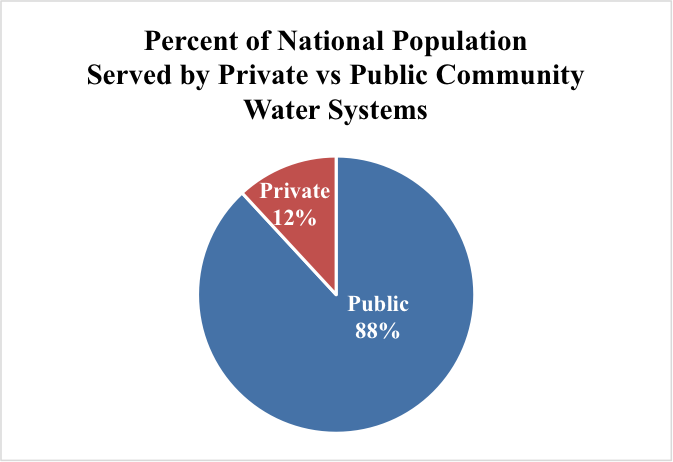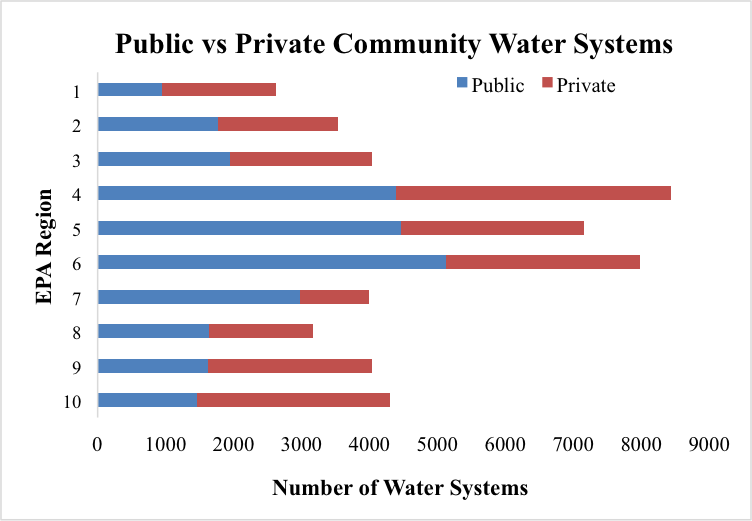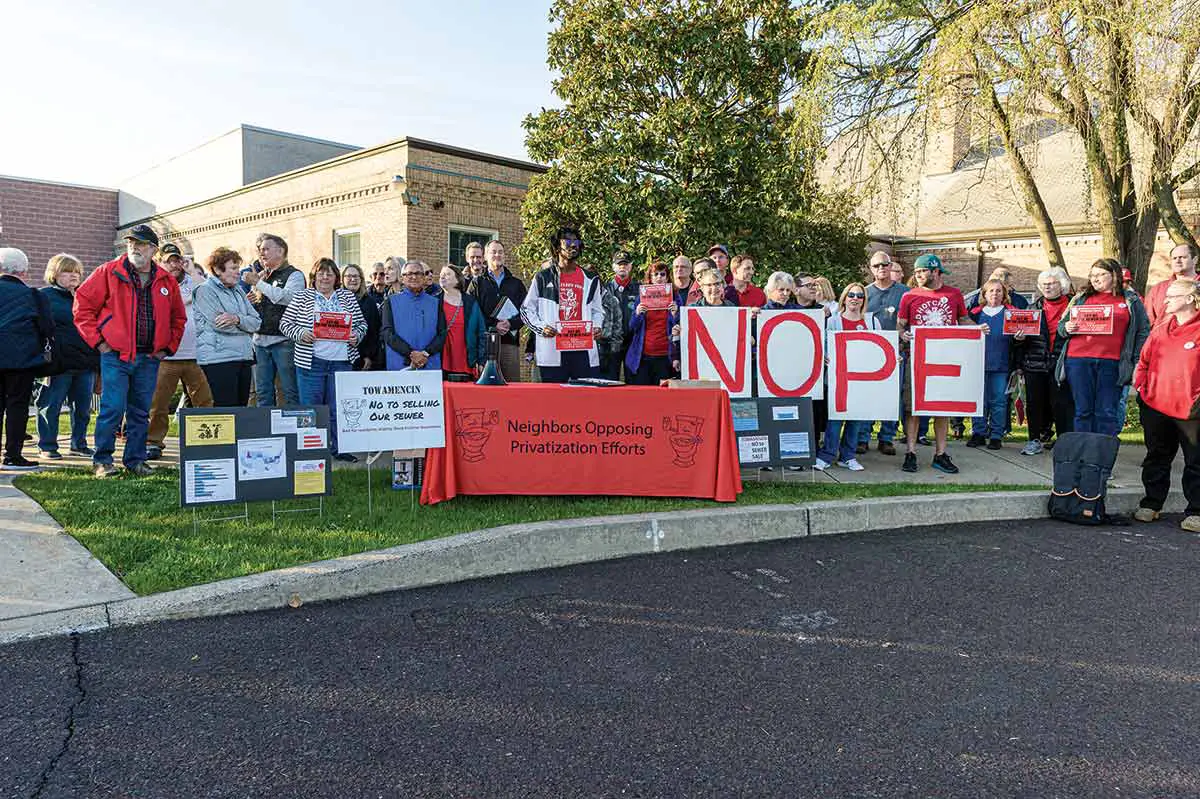Through the last few decades, the subject of infrastructure has come up many times, and how towns, and cities here in the US and abroad will be able to find a solution to this expensive and complicated problem, with some local governments, the clock is ticking. Selling aging water systems could be the answer. What is Water Privatization?
Water privatization is when a private company buys or operates a public water system while a Public-Private Partnership Privatization is a collaboration between the public water system & private-sector company, in many cases, can be a solution to municipal budget problems & aging infrastructure.
The need to channel water supplies from distant sources was an outcome of the growth of urban communities and among the most notable ancient water-conveyance systems are aqueducts built throughout the Roman Empire.
What is Water Privatization of Public Water
Water Systems include city service facilities for the collection, treatment, storage, and distribution of water wells, storage reservoirs, canals, and aqueducts, along with a distribution system. Today’s reservoirs are formed usually by constructing dams near the collection point of mountain-water runoff or across rivers.
After the water reaches collection points, it is collected and treated to improve its quality. The clean treated water is then pumped either directly into a city or town’s drinking water distribution system or to an elevated storage location, such as a clean water tank for water supply.
A water system that is safe and readily available clean drinking water is key to public health. Community water systems and water safety plans (WSP) are important ways to ensure the health of a community and access to drinking water. In all cases, the water must fulfill both quality and quantity requirements in water systems.
The function of water companies is to provide users with a clean potable water supply with a sufficient pressure level. A government community water system (CWS) supplies drinking water to the same population year-round. Water supply systems are intricately linked with the economic well-being, security, and social fabric of the communities.
In many places, cities, towns, and communities cannot effectively adapt their current systems for water quality, sanitation, and hygiene to the community’s changing needs eventually as the population of people grows.
Privatizing collection, transmission, treatment, storage, and distribution of a water supply for homes, commercial establishments, industry, and irrigation, as well as for such public needs as firefighting and street flushing is an option for people managing towns and cities.
Includes a water source, means, or process of supplying water for a community usually including reservoirs aquifers, or some water supply along with tunnels, and service pipelines to deliver it to the public.
Privatizing Public Water Sevice
Public-Private Partnership Privatization
According to the National Association of Water Companies (NAWC), more than 2,000 facilities operate in Public-Private partnership contract arrangements here in America. Big companies can come in absorbing debt created by the aging infrastructure relieving cities that are in over their head. These are the most common Privatization partnership agreements here in the states and around the world.
 They involve collaboration between a government agency and a private-sector company that can be used to finance, build, and operate projects for water systems or other projects.
They involve collaboration between a government agency and a private-sector company that can be used to finance, build, and operate projects for water systems or other projects.
Although Publicly Owned-water systems are predominant today, privately owned water systems are not uncommon, and mixed public-private water systems remain common in some countries. In France, a combination of public ownership of water systems with private management of the systems’ operation has existed since the mid-19th century.
According to the National Association of Water Companies (NAWC), more than 2,000 facilities operate in Public-Private Partnership contract arrangements. This kind of partnership is happening all over in places like:
- Nashville, Tennessee
- Miami-Dade County, Water, and Sewer Department (WASD) in Florida.
- People in California were first in line for PPPs to become available
- Many smaller and bigger systems
More and more countries like Russia, China Malaysia, and Algiers governments are privatizing and using a series of mixed-model privatization with Public-Private Partnerships instead of full Public-Public or full Privatization agreement contracts.
In bigger cities, governments have entered into complete contracts and Public-Public Partnerships relieving themselves of responsibilities and expenses. Additionally, Public-Public Partnerships between public water utilities and the public employee unions that operate the systems have worked well in the United States. These joint utility-worker partnerships engage worker expertise to increase system efficiency and reduce the costs of the water systems.
Water Privatization in the United States
- In January 1999, the city of Atlanta, Georgia entered into a 20-year contract with United Water Resources Inc., a private company to run its drinking water system. Based on hundreds of residents complained of dirty drinking water and poor services since the city agreed to the privatization contract. Atlanta since then under new leadership terminated its contract with United Water. At the time, this was the nation’s largest public-private partnership contract.

- On August 26, 2011, the city of Indianapolis transferred both its water and wastewater systems to a non-profit charitable trust known as Citizens Energy Group, for more than $1.9 billion
- As of 24 June 2014, the Detroit Water and Sewerage Department with an estimated $5 billion in debt and has been the subject of privatization talks says half of its 323,000 accounts are delinquent and has begun turning off the taps of those who do not pay bills that total above $150 or that are 60 days late. Detroit has been inundated with corruption and debt and has long been a candidate for privatization solutions.
- In countries like England and Wales, Chile, Argentina, Uruguay, Columbia, and South Africa, looking to the private sector to provide more water supply and service eventually led to a wave of privatization of public water companies in the last few decades.
Outside the U.S.
- As far back as 1997, the Bolivian Government signed up for a World Bank loan to improve water access provisions in its main cities, which had privatization of those water systems as a condition.
- The Cochabamba Water War was a series of violent protests that took place in Cochabamba, Bolivia’s fourth largest city, between December 1999 and April 2000 in response to the privatization of the city’s municipal water supply and service company SEMAPA.
EPA Regions: 1) Connecticut, Massachusetts, Maine, New Hampshire, Rhode Island, Vermont; 2) New Jersey, New York, Puerto Rico, US Virgin Islands; 3) Delaware, District of Columbia, Maryland, Pennsylvania, Virginia, West Virginia; 4) Alabama, Florida, Georgia, Kentucky, Mississippi, North Carolina, South Carolina, Tennessee; 5) Illinois, Indiana, Michigan, Minnesota, Ohio, Wisconsin; 6) Arkansas, Louisiana, New Mexico, Oklahoma, Texas; 7) Iowa, Kansas, Missouri, Nebraska; 8) Colorado, Montana, North Dakota, Utah, Wyoming; 9) Arizona, California, Hawaii, Nevada, American Samoa, Guam; 10) Alaska, Idaho, Oregon, Washington
Water Privatization Pros and Cons
There has been a great debate when it comes to Water Privatization since the 1990s when it was first used decades ago. In America, public water sources are usually run as a non-profit entity managed by elected or appointed local city or state government boards for which rates are set.
Private systems, on the other hand, can be run as profit systems managed by investors or shareholders as companies. Even though rates are monitored by a state’s public commission, private systems are not necessarily subject to this regulating board. Privatization can relieve a community of huge amounts of money from engineering and construction fees that could be used for other roads, hospitals, bridges, and other infrastructure.
Then again, a public Water System is a valuable asset controlled by the community but is it all worth it, especially if there is an offer on the table to go with privatized water?
There is a decision to make whether to hand over what is a valuable asset that is connected to people in most communities across this country and others or hold on to it and find a solution to revitalize the public water systems aging infrastructure’s pipes, pump stations, towers, and treatment plants.
This article called The War Over Public Water in Pennsylvania where this author is from explains the bipartisan feelings of small-town America and how the subject of Water Privatization and the involvement of big corporations affects communities that have always been self-sufficient in the management of their town.
The main complaint of Water Privatization is the rise in the cost of rates and connection fees that are normally controlled by a water board made up of neighbors who ultimately have no advantage and see no profits by raising prices for a company that is a non-profit. That could all change when a private corporate company takes over a water system or a maintenance program for potholes. It won’t matter.
Privatizing the Public Sector Cost and Service
I was involved in town and county water & sewer utility companies for many years and have my own opinions based on 30 years of experience working in a community where profit was not an issue. The most important thing that mattered was the township’s million-dollar bonds were appropriated for future improvements to the system with private water companies.
The city had a freshwater Aquifer and Water treatment plant along with a Sewage Treatment plant 10 miles from the service area. They both have been closed down for regionalization purposes in the last 20 years in a deal with Philadelphia that was 15 miles away.
Utilities like the pump stations, water, and sewer lines, and water tower are still maintained by a skeleton crew of a half dozen staff from the original company. When I was hired in 1974 there was 40 staff counting the girls in the office.
There are water privatization pros and cons with public and private water companies and water privatization pros and cons come with some costs.
They had a neighborhood vibe and feel. Employees were hired from the area and board members were appointed from the water service area. Local high school kids painted pump stations and cut grass on summer vacation. A college education could even be paid for by the company if you were an employee for a few years.
At the same time, if Mrs. Smith or any neighbor in our community needed 20 dollars to keep her water from being shut off, utility workers were bonded so we could collect money from her or others (normally us) so that we were capable of paying her bill and keep her water on.
The biggest loss that comes with Privatization besides the sense that clean water belongs to everyone on earth to manage and maintain, would be to me the sense of community that would be traded for the price of a gallon.
City and towns have been built by people on the edge of the water for access to it for a thousand years which lead to the creation of the Water & Sewer Companies so that communities could thrive and grow. Whether that time is still needed should be up to the people who live there.
The Components of Economic Infrastructure
For more great articles like these and anything related to the topic of water stay right here at MyWaterEarth&Sky-The planners and builders that built American towns and cities after World War II were innovators who had the foresight to create working mechanically structured grids, laid out with the …………………………………………………………………… Read more
JimGalloway Author/Editor

References:
Cornell University-Public-Public Partnership
Rapid Transition Alliance-Turning the tide of water privatization – The rise of the new Municipal Movement
Related Questions:
What are the issues with water privatization?
